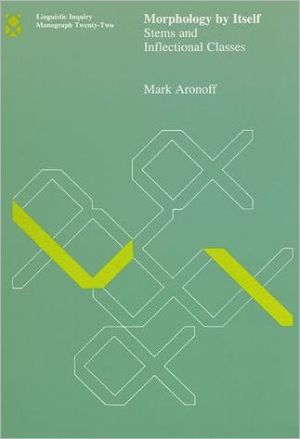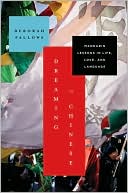Morphology by Itself: Stems and Inflectional Classes
Most recent research in generative morphology has avoided the treatment of purely morphological phenomena and has focused instead on interface questions, such as the relation between morphology and syntax or between morphology and phonology. In this monograph Mark Aronoff argues that linguists must consider morphology by itself, not merely as an appendage of syntax and phonology, and that linguistic theory must allow for a separate and autonomous morphological component.Following a general...
Search in google:
In this monograph Mark Aronoff argues that linguists must consider morphology by itself, not merely as an appendage of syntax and phonology, and that linguistic theory must allow for a separate and autonomous morphological component.
Series ForewordPrefaceAbbreviationsIntroduction1Ch. 1Preliminary Terms51.2Separationist Morphology and Lexemes81.3Other Basic Morphological Terms111.4Lexical, Lexemic, and the Lexicon161.5The Morphomic Level22Ch. 2Stems in Latin Verbal Morphology312.1Priscianic Formation of Latin Future, Active Participles312.2Stems in Lexeme-Based Morphology332.3The Stem and Related Notions392.4Stems and the Permanent Lexicon412.5Empty Morphs442.6Semantics and the Latin Basic Stem Types542.7Phonologically Specific Stems58Ch. 3Gender and Nominal Inflectional Classes613.1Terminology643.2Two Simple Examples of the Relation between Gender and Inflectional Class663.3Hebrew, a Language without Nominal Inflectional Classes753.4Latin Nominal Inflection79Ch. 4Gender, Inflection, and Phonological Form in Two Languages of Papua New Guinea: Arapesh and Yimas894.1Arapesh Gender as Revealed through Agreement904.2Inflectional Classes by Themselves1044.3Sex, Gender, and Inflectional Class1114.4Word Formation1124.5Yimas114Ch. 5Binyanim as Inflectional Classes1235.1The Term Binyan and Its Meaning1235.2The Hebrew Binyan System1245.3The Abstract Nature of the Binyan1345.4Qal Stem Templates1415.5Varia1475.6Aramaic Binyanim1505.7Syriac1515.8Modern Aramaic1545.9Michal: A Semitic Language without Binyanim160Ch. 6Conclusion165Notes171References197Index207








